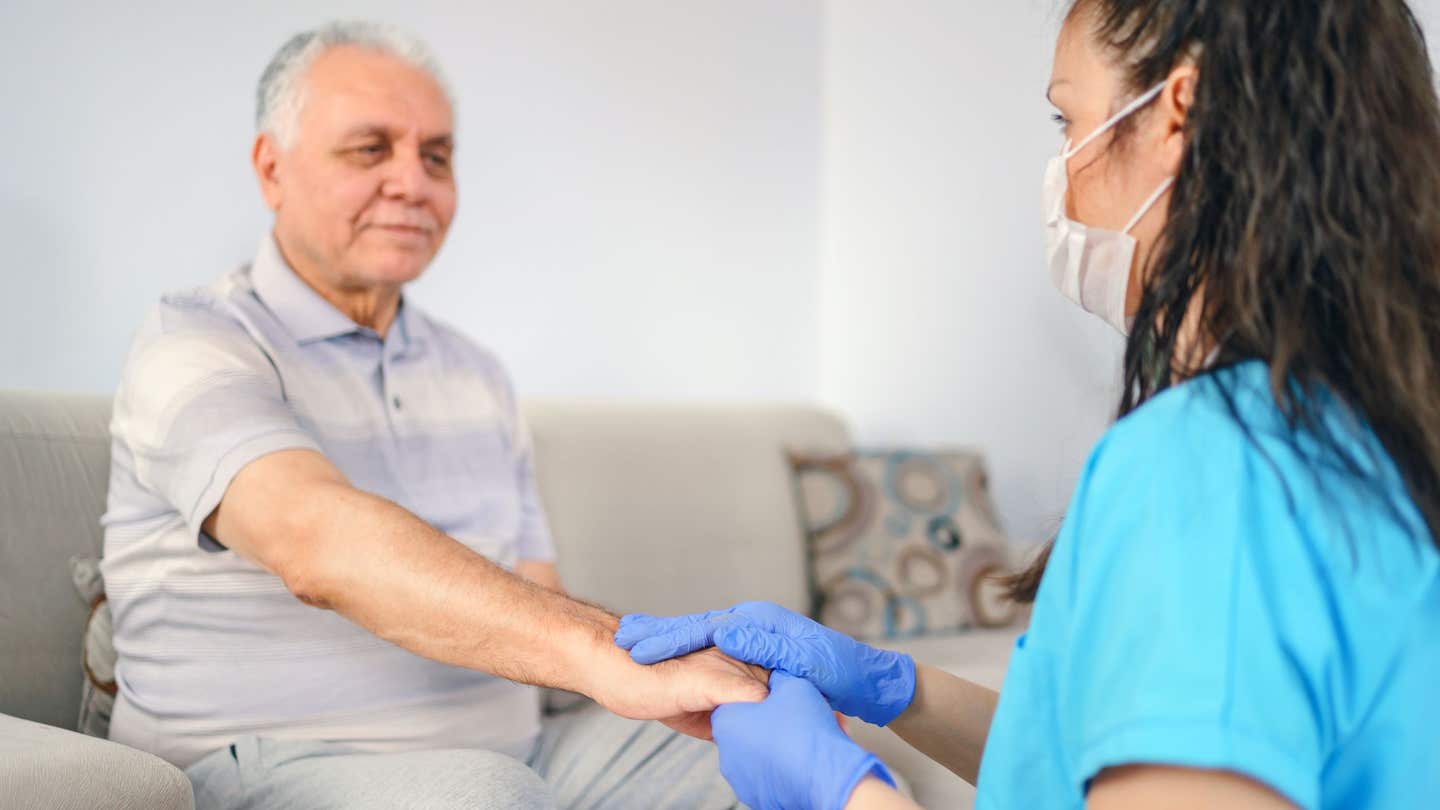World-first: A biomarker that can diagnose Parkinson’s disease
It is hoped that being able to diagnose the disease faster will also lead to the development of new treatment methods for aging societies.

[June 3, 2022: Verity Townsend, Kobe University]
Researchers have successfully developed a biomarker that will enable Parkinson’s disease to be rapidly and inexpensively diagnosed from blood serum samples. (CREDIT: Creative Commons)
Researchers at Kobe University and Hiroshima University have successfully developed a biomarker that will enable Parkinson’s disease to be rapidly and inexpensively diagnosed from blood serum samples.
It is hoped that being able to diagnose the disease faster will also lead to the development of new treatment methods. This would be greatly beneficial, especially for aging societies like Japan.
This study was conducted by Professor IMAISHI Hiromasa and Academic Researcher IHARA Kohei et al. of Kobe University’s Biosignal Research Center, and Assistant Professor OGURO Ami’s research group at Hiroshima University’s Graduate School of Integrated Sciences for Life.
These research results were published in Springer Nature’s open journal ‘Scientific Reports’.
Main Points
Japan is a super-aging country. As the elderly population continues to increase, it is predicted that the number of patients suffering from neurodegenerative diseases will also rise.
Parkinson’s disease is a type of neurodegenerative disease for which a simple diagnosis method had yet to be developed.
Currently, various biomarkers are in development that can be used to evaluate diseases. These biomarkers can detect the presence of a disease, as well as monitor its progress and the effectiveness of treatment.
In a world-first, the researchers succeeded in developing a biomarker that can be used to easily and inexpensively assess Parkinson’s disease. It requires a mere approx. 30μ of serum from the patient.
It is hoped that this biomarker can be used to develop diagnosis and treatment methods for Parkinson’s, as well as to advance research into discovering the molecular mechanism behind this disease.
Related Stories:
Research Background
Japan has the fastest growing elderly population in the world and is consequently facing related issues such as the decline in elderly people’s Quality of Life (QoL) and pressure on the caregiving sector. As people age, their risk of developing various diseases increases. In particular, neurodegenerative diseases such as Parkinson’s disease have a significant impact on the sufferer’s QoL. In addition, Parkinson’s is the second most common neurodegenerative disease in the world; believed to affect around 1~2% of the over 60s population. Furthermore, it is predicted to cost the global market 19.9 billion US dollars (including treatment costs) in 2030.
Currently, there is no way of completely curing Parkinson’s disease. Therefore, early detection is vital in order to stop its progression. In addition, it is predicted that even earlier detection will be important in the future as various pharmaceutical companies are currently working on developing therapeutic drugs for Parkinson’s.
In light of these circumstances, there is a pressing need for a simple screening method that puts little burden on the patient. In addition, early screening methods in particular should be easy to carry out and inexpensive.
Research Methodology
The drug metabolizing enzyme Cytochrome P450 not only metabolizes drugs but also serves as a catalyst for the oxidation of various substances. It is known that the expression of P450 inside the body changes with the onset of various diseases. This change in P450 expression is thought to affect the quantity and quality of metabolites in the patient’s body that are related to P450 (Figure 1).
Figure 1: Disease onset and changes in P450 expression. (CREDIT: Kohei Ihara and Hiromasa Imaishi)
This research group previously came up with a ‘P450 inhibition assay’ to easily detect changes in the quality and quantity of P450-related metabolites brought on by the onset of disease. This time, they became the first in the world to successfully apply this method to Parkinson’s disease diagnosis.
In the developed assay, 12 different human P450s are each mixed with a serum sample and a fluorescent substrate to cause a reaction. There are differences in quantity and quality of P450-related metabolites in the sera from healthy individuals and patients. These serum metabolites inhibit the P450-mediated oxidation of the fluorescent substrate.
By looking at the inhibition rate related to disease onset-mediated alterations in certain P450s, it is possible to discriminate sera samples from an individual with a specific disease and a healthy subject. As shown in Figure 2, P450 reacts with the fluorescent substrate to generate a fluorescent substance when the assay is performed on the sera from healthy individuals. However, the reaction is different when the assay is conducted on the sera from patients and thus the obtained fluorescent values change. In this way, the ‘P450 fluorescent inhibition assay’ can be used to determine whether or not a disease is present by detecting these changes. It is a new liquid biopsy technique that didn’t exist until now.
Figure 2: Diagram explaining the P450 inhibition assay. (CREDIT: Kohei Ihara and Hiromasa Imaishi)
The current study on Parkinson’s disease utilized the ‘P450 inhibition assay’ that was independently developed by this research group. Specifically, they carried out the assay on Parkinson’s disease model rats and on human patients with the disease (as well as patients with other neurodegenerative and inflammatory diseases) to evaluate whether or not the assay could be used for Parkinson’s disease diagnosis. The results revealed that healthy individuals and individuals with Parkinson’s disease could be classified at an accuracy rate of 85~88% for both the model rat and human subjects (Figure 3).
Figure 3: Summarized results of analyses performed using Parkinson’s disease model rats and humans with Parkinson’s disease. (CREDIT: Kohei Ihara and Hiromasa Imaishi)
Further Developments
The results of this study have shown that the ‘P450 inhibition assay’ has the potential to be applied to the diagnosis of Parkinson’s disease. This assay only requires mere 30μ of serum and is a comparatively inexpensive testing method, therefore it is thought that it will benefit Parkinson’s disease screening. Next, the researchers will conduct clinical performance evaluations on a larger scale, with the aim of working towards the implementation of this testing method.
Glossary
1. Cytochrome P450: Cytochrome P450 enzyme is a hemeprotein that plays an important role in many processes, such as metabolizing various drugs and synthesizing hormones. P450 is also responsible for oxidizing a large number of substances. In humans, 57 molecular species of P450 are known to exist. P450 is mainly expressed in the liver, however it can also be expressed in other parts of the body such as the lungs, the gastrointestinal tract, and the brain.
2. Parkinson’s disease: Parkinson’s disease is a progressive neurodegenerative disease in which the nervous system that controls the brain’s motor functions gradually deteriorates. The disease is often seen in the elderly and its manifestations include tremors in the legs and hands, muscle rigidity and bradykinesia (slowness of movement). It is major cause of people becoming wheelchair-bound or bedridden. It is also one of the Japanese Ministry of Health, Labour and Welfare’s ‘designated intractable diseases’. This means that Parkinson’s disease is included the Act on Medical Care for Patients with Intractable Diseases.
3. Serum (plural: sera): This is a pale yellow liquid supernatant which is formed when a blood sample is allowed to clot (coagulation). Sera samples are used in many diagnostic tests, such as those to determine the composition of a person’s blood.
4. Liquid biopsy: A non-invasive technique that uses samples of bodily fluids to diagnose or check the progress of a diseases etc. The burden of this method on the patient is low and it has received much attention in recent years.
For more science and technology stories check out our New Discoveries section at The Brighter Side of News.
Note: Materials provided above by the Kobe University. Content may be edited for style and length.
Like these kind of feel good stories? Get the Brighter Side of News' newsletter.
Tags: #New_Discoveries, #Blood_Test, #Medical_News, #Neuroscience, #Science, #Parkinsons_Disease, #Biomarkers, #Research, #The_Brighter_Side_of_News
Joseph Shavit
Head Science News Writer | Communicating Innovation & Discovery
Based in Los Angeles, Joseph Shavit is an accomplished science journalist, head science news writer and co-founder at The Brighter Side of News, where he translates cutting-edge discoveries into compelling stories for a broad audience. With a strong background spanning science, business, product management, media leadership, and entrepreneurship, Joseph brings a unique perspective to science communication. His expertise allows him to uncover the intersection of technological advancements and market potential, shedding light on how groundbreaking research evolves into transformative products and industries.



